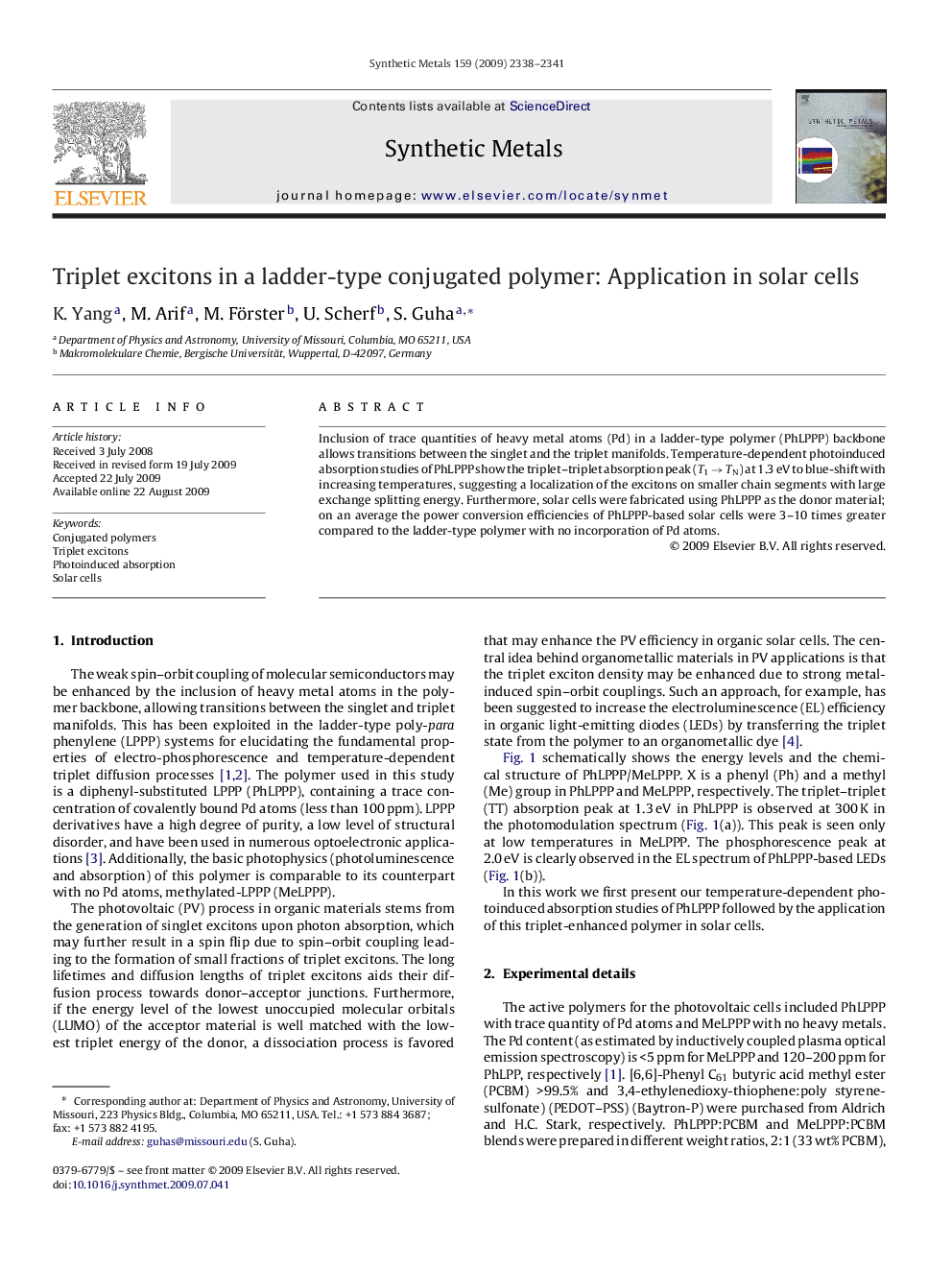| Article ID | Journal | Published Year | Pages | File Type |
|---|---|---|---|---|
| 1442882 | Synthetic Metals | 2009 | 4 Pages |
Abstract
Inclusion of trace quantities of heavy metal atoms (Pd) in a ladder-type polymer (PhLPPP) backbone allows transitions between the singlet and the triplet manifolds. Temperature-dependent photoinduced absorption studies of PhLPPP show the triplet–triplet absorption peak (T1 → TN) at 1.3 eV to blue-shift with increasing temperatures, suggesting a localization of the excitons on smaller chain segments with large exchange splitting energy. Furthermore, solar cells were fabricated using PhLPPP as the donor material; on an average the power conversion efficiencies of PhLPPP-based solar cells were 3–10 times greater compared to the ladder-type polymer with no incorporation of Pd atoms.
Related Topics
Physical Sciences and Engineering
Materials Science
Biomaterials
Authors
K. Yang, M. Arif, M. Förster, U. Scherf, S. Guha,
